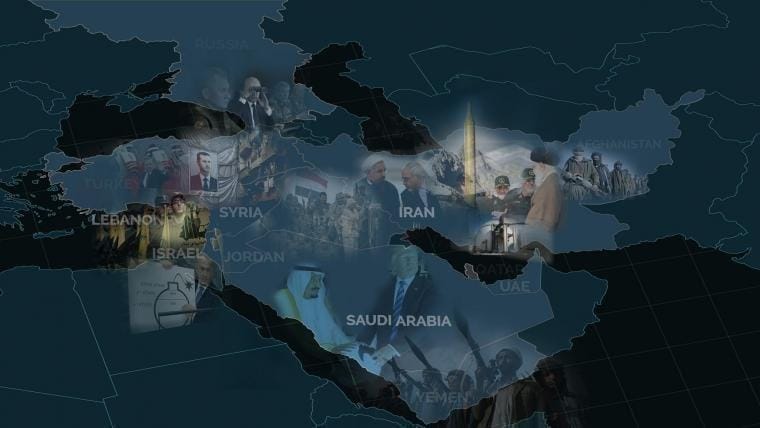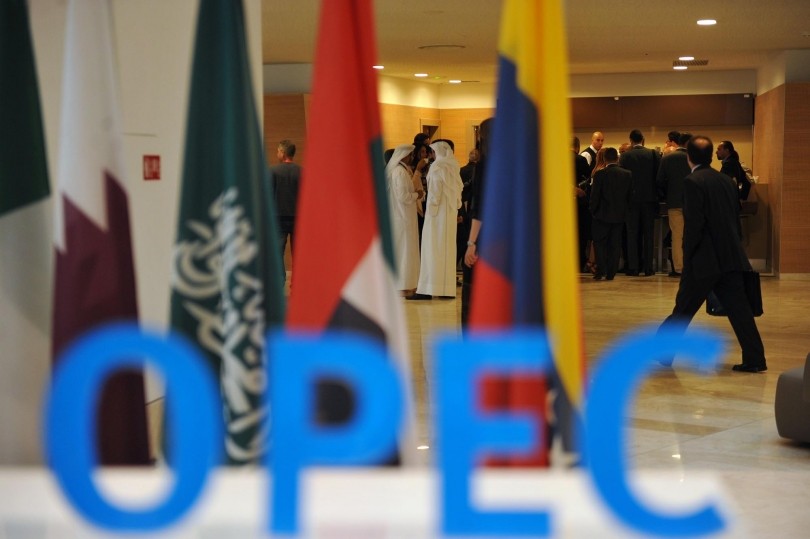
In contemporary international relations, sovereign states often switch alliances and forge relations with their former adversaries with the intent to fully maximise their national interests. So, it can safely be said that the national interests of a country determine the direction and nature of its foreign policy. The ongoing bonhomie between Russia and Saudi Arabia is a case in point, indicating how the shifting sands of the Middle East and Russo-Saudi converging economic and security objectives have brought the two countries on the same regional page, albeit in the midst of some geopolitical and security divergences between the two countries.
Saudi King Salman paid a historic visit to Russia in the early October becoming the first Saudi monarch to visit Moscow since the end of World War 11. Both the countries concluded more than 15 cooperation agreements worth millions of dollars, ranging from oil, military and space technology. The Russian foreign minister, Sergei Lavrov, claimed that the visit marked the moment when Saudi-Russian relations “reached a new qualitative level”.
Both countries signed an agreement in the Kremlin on the creation of a $1 billion joint investment fund. Russian sovereign wealth fund RDIF and Saudi Arabia’s Public Investment Fund signed an agreement to invest up to $100 million in transport projects in Russia. RDIF said Abu Dhabi’s state-owned Mubadala fund would also co-invest in the holding company. The three partners are studying participation in three projects in Moscow and St Petersburg. They expect to invest a total of $226 million, according to RDIF.
The Russo-Saudi bonhomie begs some pertinent questions: despite having all-out American economic and military backing, why is the House of Saud striving to come closer to Moscow? What impacts the Saudi-Russian partnership have on the militancy-hit Middle East in the foreseeable future?
Saudi-Russia Relations-a Brief Historical sketch
It is interesting to note that the Soviet Union was one of the first states to recognize Saudi Arabia after the kingdom’s founder, King Abdulaziz Al Saud, conquered Hijaz from the pro-British Hashemites. In 1926, a Soviet embassy was opened in Jeddah. The communists saw the Saudis as an anti-imperialist movement, and the Saudis were looking for allies against the British. The king’s son, Prince Faisal, visited Russia in 1932 and met with senior Soviet officials but not Josef Stalin, the Soviet leader. In 1938, Stalin withdrew the Soviet mission and executed all of its members in the midst of a massive purge in the Communist Party. Relations were not renewed until after the Cold War in 1990.
The Saudi monetary support to the Afghan mujahedeen in the 1980s further brought the Saudi-Soviet relations to a nadir. Moscow was fully acquainted with the fact that the Saudi intelligence service allied with the CIA and Pakistan’s intelligence agencies to support the mujahedeen. When the House of Saud ran out of funds, what it did was to set up a committee designed to raise private funding for the ragtag Afghan fighters. Former king Salman raised hundreds of millions of dollars from the royal family and other well-off Saudis to increase the government money that flowed from Washington and Riyadh via Islamabad to the Afghan guerrillas.
After the end of the Cold War and disintegration of the USSR, the Saudis left no stones unturned with respect to forging a robust relationship with Russia. Though Russia was economically weak due to its Afghan gamble, it still possessed one of the most modern and powerful militaries of the world. Russian military prowess attracted Saudi Arabia that has continually made efforts at creating an arms-sales relationship and a program to share nuclear technology. Despite repeated attempts, not much was implemented mainly on account of strong Riyadh-Washington partnership. Though both countries successfully concluded an accord to jointly limit oil exports, this has thus far somehow failed to raise prices.

The Iran Factor
From the 1950s till 1979, both energy-rich Saudi Arabia and Iran had been on the economic and security bandwagon of the United States, playing pivotal roles in curtailing the serpent of the erstwhile Soviet Union’s communism in the Middle East. But the Islamic Revolution of Iran (1979) changed the tectonic flats of alliances in the region, thus instigating Tehran to permanently part ways the United States in the region. Since 1979, both Tehran and Riyadh have been embroiled in fighting disruptive proxy wars in the Middle East, each side has been engaged in promoting and disseminating its own political ideology in the region.
With all-out Russian backing, Iran has somehow outweighed Saudi Arabia in the Middle East. Since the beginning of the popular or well-orchestrated uprising against the beleaguered Assad regime in Syria, Iran has continued to funnel needed security and economic assistance to the Syria’s Baathist government. Such sustained and increased support from Tehran has so far largely shored up the Assad regime against the Syrian Democratic Forces (SDFs); the SDF forces are being vetted, trained, armed and funded by the West, including Saudi Arabia.
Despite repeated Saudi demands, the former Obama administration and now the Trump presidency had/ have displayed an outright reluctance to resort to direct military intervention with the intent to oust the long-serving Assad regime in Syria. Saudi Arabia deems the Assad regime as a Russian and Iranian client state protecting the geopolitical policies of the two countries in the Middle East and North Africa. The Iranian success in terms of safeguarding the Assad region has encouraged Tehran to ramp up its military support to the Houthi rebels in Yemen; these rebels have continued to control Yemeni capital Sana and are fighting against the forces of the Saudi-backed and internationally-recognized government of President Abdrabbuh Mansour Hadi.
The dismal failure of the United State to protect Saudi security and geopolitical objectives in the Middle East has compelled the House of Saud to cultivate amicable relations with Russia. As soon as this Saudi-Russia partnership gets stronger, Riyadh will try to persuade Moscow to decrease its diplomatic, military and economic backing to Tehran in the Middle East. What is important to mention is that if Russia cuts or decrease its support to Iran, Tehran will not be able or capable to challenge Saudi dominance in the Middle East.
All this begs a pertinent question: will Russia leave Iran, its long-lasting regional partner, in the lurch and forge robust and working relations with Iranian archrival, Saudi Arabia? If strongman Vladimir Putin continues to be the Russian president, he would not accept such Saudi demands in terms of checking and curtailing Iranian assertiveness in the Middle East.
Moreover, Russia is also unlikely to back up the Saudi–led multination coalition against the Iranian-funded Houthi rebels in Yemen. The Kremlin is fully acquainted with this fact that if it throws its weight behind Saudi Arabia in the Yemen civil war, such a behavior will anger Iran. Russia was the only country to abstain on the United Nations Security Council resolution that Riyadh uses to justify its 2½ year-old war in Yemen. The Russians said the resolution was unbalanced and unenforceable.
However, if Saudi Arabia wants, then Moscow may agree to play the role of an effectual mediator between Tehran and Riyadh to bring an end to the Yemen civil war.

The oil factor
On account of falling oil prices due to surplus production by the OPEC countries, Saudi Arabia and Russia have so far lost millions of dollars. The two countries helped secure a deal between OPEC and other producers to cut oil output until the end of March 2018. “We are committed to continuing positive cooperation between our nations to achieve stability on the global oil markets,” King Salman was reported as saying by Russian state news agency Tass.
Apart from this, Russian Energy Minister Alexander Novak said in an interview that the planned $1-billion fund to invest in energy projects were part of efforts to strengthen cooperation in oil, gas, electricity, renewable energy, and other projects. Both the countries will exert further efforts to stabilize the declining price of oil by cutting down crude production.
Such a move is likely to badly impact the sanctions-hit economy of Iran as Tehran has recently increased its oil production after the lifting of Western and UN economic sanctions, thanks to the Iran nuclear deal signed in July 2015. Presumably, this is one of the major Saudi objectives behind befriending Russia so as to weaken Iran regionally and internationally by squeezing its sources of revenues.
The Nuclear Factor
According to Russian Economy Minister Maxim Oreshkin, investors have been interested in a nuclear energy plant that Saudi Arabia wants to build and Saudis would be offered investment opportunities including in shipping company Sovcomflot. It is imperative to mention that Saudi Arabia has stepped up its efforts to expand its civilian nuclear programme after the Iran nuclear deal. Riyadh fears that a sanctions-free Iran would expedite its works to produce enough uranium which will help Tehran make nuclear bombs in the future. The House of Saud wishes to build enough nuclear power plants with the potential to produce nuclear bombs if Iran acquires nuclear power capability in the near future.
The Arms Factor
Saudi Arabia is one of the biggest arms buyers in the world. It has allocated 191 billion riyals ($51 billion), or 21% of its 2017 budget, to military spending. To further improve its security, the Saudi king showed its interest in buying Russia’s S-400 air defense missile system. Moreover, the countries also signed a memorandum of understanding to help the kingdom in its efforts to develop its own military industries, Saudi Arabia is also set to buy Kornet anti-tank guided missile systems and multiple rocket launchers under the deal. These agreements are “expected to play a pivotal role in the growth and development of the military and military systems industry in Saudi Arabia,” Saudi Arabian Military Industries (SAMI), the kingdom’s military industries firm said.
Concluding Remarks
Saudi Arabia is inclined to diversify its sources of revenues. So, it is making efforts to invest in energy and transport infrastructures of some developed countries such as the United States and Russia. Riyadh is also interested in having its own nuclear programme so that it could capitalize on it for its security in the future against threats emanating from the Gulf. One of the major objectives of Saudi Arabia behind cultivation of robust ties with Russia is to exert backstairs influence on Moscow in order to limit and check rising Iranian assertiveness and clout in the Middle East. Since Moscow has succeeded to augment its sway in the Middle East with all-out Iranian backing, it will not take such steps which will prove obstructive and detrimental to Tehran’s economic and security interests in the region.




